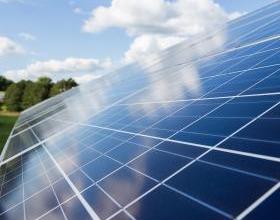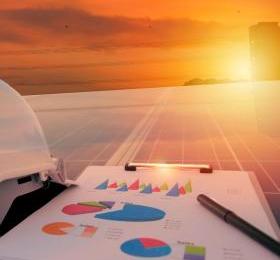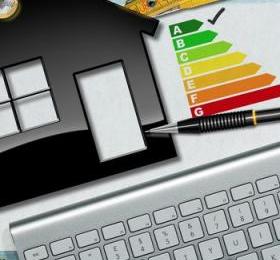Summary of the most important points of the maxi-deduction at 110%, now in definitive version.
The 110% superbonus for construction includes a somewhat complex and precise measure, discussed and modified in detail during the conversion into law of the DL Relaunch; now the text - after the vote of confidence in the House - is under consideration by the Senate, where rapid approval is expected without further changes before the imminent conversion into a decree by 18 July.
A continuation we offer you a summary of the most important points concerning the superbonus, to understand who is responsible, which interventions are allowed and with what spending thresholds.
For whom and how
The new 110% deduction introduced with article 119 of the Legislative Decree relates to interventions carried out from 1 July 2020 to 31 December 2021. The term is extended to 30 June 2022 for interventions carried out by the autonomous public housing institutes (IACP).
The relative credit will be transferable without limit, even to the banks, it can also be enjoyed as a discount on the invoice and will be disbursed in 5 years (against the current 10).
The measure applies to individuals but not to business income holders; to condominiums, IACPs, housing cooperatives, third sector entities, associations and amateur sports clubs.
The superbonus is not only valid for works carried out in residential homes, but also for those carried out in second homes, with the exception of categories A1 (stately homes), A8 (villas), A9 (castles).
In addition, each individual taxpayer (natural person outside the exercise of business, arts and professions) will be able to use the 110% bonus on the maximum number of two real estate units.
The interventions allowed
The "strong core" of the works admitted to the new enhanced deduction is composed of two stimulating strands: thermal insulation of the envelope (in the text we also speak of oblique surfaces, therefore the roofs, in addition to the vertical / horizontal opaque surfaces), and replacement of the winter air conditioning systems with condensing boilers (at least in class A), heat pumps, solar collectors, micro-cogeneration units and efficient district heating systems (only in mountain municipalities not affected by EU infringement procedures for the quality of the air).
There is also the possibility of replacing the old system with a 5-star biomass boiler, only for the non-methane areas of the municipalities excluded from the EU infringement procedures for air quality.
The 110% superbonus is also recognized for expenses related to earthquake-resistant works except for seismic zone 4, that is the least dangerous.
In addition, there is photovoltaics, another nucleus of interventions admitted to the maxi-deduction of 110% only if performed in conjunction with one or more of the main works of paragraph 1 of the standard: thermal insulation and replacement of the air conditioning system. This category includes photovoltaic systems, storage systems for photovoltaics, charging points for electric vehicles and all energy efficiency measures already included in the eco-bonus.
For photovoltaics there is one more possibility: in fact, it can be included in the 110% deduction even when it is installed in conjunction with anti-seismic works; in practice, the super-earthquake bonus of 110% can act as a driving force for the installation of photovoltaic systems.
Energy requirements
As a whole, the incentivized energy redevelopment interventions must guarantee the improvement of at least two energy classes, or, if not possible, bring the home to the highest achievable energy class.
This must be demonstrated with an energy performance certificate (APE) before and after the intervention issued by a qualified technician, in the form of the sworn declaration.
All incentivized energy efficiency interventions must then comply with the minimum requirements, provided for by the decrees referred to in paragraph 3-ter of article 14 of the decree-law of 4 June 2013, n. 63.
Spending conditions and limits
As regards thermal insulation, the maximum allowed expenditure is € 50,000 for single-family buildings or terraced houses, € 40,000 per real estate unit in buildings consisting of two to eight units, € 30,000 per real estate unit in larger condominiums.
However, the insulation must relate to the vertical, horizontal and inclined opaque surfaces affecting the building envelope with an incidence greater than 25% of the gross dispersing surface.
As regards, however, the replacement of existing winter air conditioning systems, the spending ceilings are equal to € 20,000 per property unit in buildings that have up to 8 units, € 15,000 per property unit in larger buildings, € 30,000 per single dwellings.

Limits and conditions for photovoltaics
For photovoltaics and batteries, the 110% reduction cannot be combined with other public incentives and other forms of facilitation of any kind provided for by European, national and regional legislation; in addition, the 110% deduction is subject to the transfer in favor of the GSE of energy not self-consumed on site or not shared for self-consumption.
The spending limit for photovoltaics and batteries is 48,000 euros in total. For the storage systems to be combined with the PV there is then a spending ceiling of 1,000 for each kWh of storage capacity, while for photovoltaics the ceilings are different depending on the case: for installations on existing buildings the limit is at 2,400 € / kW of power, while it drops to 1,600 € / kW in the case of "building renovation interventions", "new construction interventions" and "urban restructuring interventions" (for more details see our article "Superbonus 110%, the revised version brings new opportunities for photovoltaics“.
Since when will it be operational?
The timing indicates as probable date mid-August. According to the coordinator of the scientific committee of Rete Irene, Virginio Trivella "the superbonus will be able to leave when two indispensable measures arrive: the circular of the Revenue Agency and the implementing decree of the Ministry of Economic Development."
The provision of the Revenue Agency will have to define some mechanisms for discounting the invoice / credit transfer; instead the MiSE decree will have to update the technical-economic requirements to allow access to the incentives.
Unfortunately, speculating a certain date before the conversion into law will be only speculative. The superbonus will hardly be able to leave before September-October, also calculating summer holidays and a period of adequacy for assimilation for all parties involved - banks, businesses, insurance companies, citizens.





